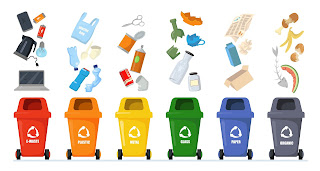Upcycling Examples That Inspire a Greener Lifestyle
The global waste crisis has sparked a growing interest in upcycling, an eco-friendly practice that turns discarded or unwanted materials into new, higher-value products. Unlike traditional recycling, which often consumes energy to break items down into raw materials, upcycling keeps items intact or transforms them with minimal processing. It’s a creative and impactful way to reduce waste, conserve resources, and promote sustainability, all while adding beauty and function to our everyday lives.
Take, for example, old furniture. Instead of tossing a scratched or outdated dresser, many DIY enthusiasts are sanding, painting, and converting it into stylish storage for modern homes. Wooden crates become rustic shelves, worn-out doors are repurposed as unique headboards, and broken chairs can find new life as garden planters. These practical upcycling examples not only reduce waste but also offer budget-friendly alternatives to buying new items.
Fashion is another industry where upcycling shines. Designers and individuals alike are transforming old clothes into trendy, wearable pieces. Denim jackets are embellished with fabric scraps or embroidery, while vintage saris are reimagined into contemporary dresses and scarves. Even smaller items like buttons, zippers, and fabric remnants are reused in creative ways, proving that fashion doesn’t have to come at the environment’s expense.
In the world of art and decor, upcycling often blurs the line between creativity and sustainability. Discarded metal scraps become striking sculptures. Used wine corks are crafted into bulletin boards or trivets. Bicycle parts turn into clocks, and plastic bottle caps are arranged into colorful mosaics. These upcycling examples show that waste can be more than just refuse, it can be a medium for artistic expression.
Upcycling also finds relevance in children’s education and play. Instead of buying new toys or craft supplies, many parents and educators are encouraging kids to build using recycled materials. Cardboard boxes transform into castles, robots, or vehicles. Toilet paper rolls become binoculars or musical instruments. These activities teach children about environmental responsibility while fostering creativity and problem-solving skills.
Beyond the home, upcycling has entered the realm of corporate responsibility and product innovation. Companies are now exploring ways to give their waste a second life—like converting old billboards into durable bags or turning industrial textiles into footwear. These efforts reduce environmental impact and align with growing consumer demand for ethical and sustainable products.
These upcycling examples reflect a powerful shift in how we perceive waste. No longer just something to discard, waste becomes a resource with untapped potential. Upcycling fosters a mindset of possibility, where creativity, practicality, and environmentalism meet.
SwagCycle brings this same spirit of innovation to the business world. Specializing in the responsible disposal of branded merchandise, SwagCycle helps companies donate, recycle, or upcycle surplus items like apparel, promotional products, and event gear. Instead of sending these materials to landfills, SwagCycle finds ways to repurpose them through vetted, sustainable channels.
By working with SwagCycle, brands not only protect their image but also contribute meaningfully to a circular economy. Whether it's giving a second life to old swag or finding new value in unused products, SwagCycle leads by example—proving that with the right approach, even waste can be transformed into something purposeful and inspiring.




Comments
Post a Comment